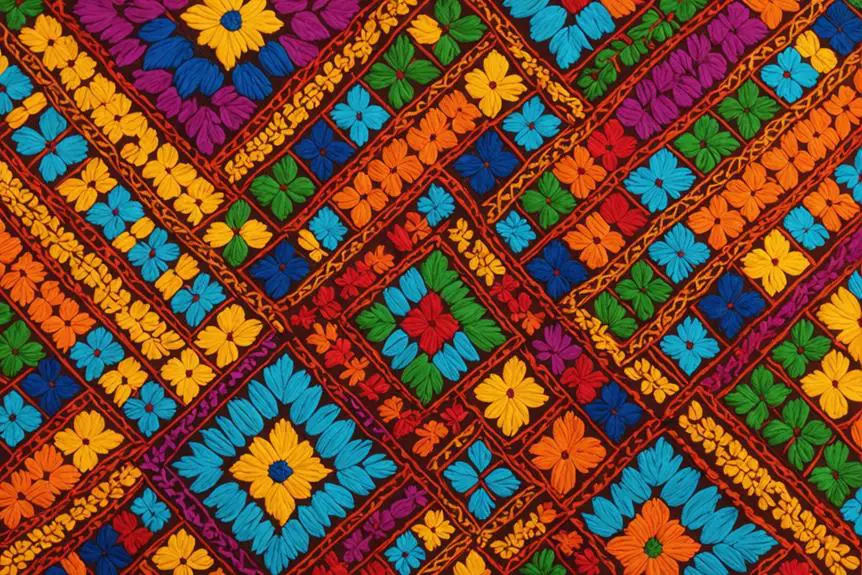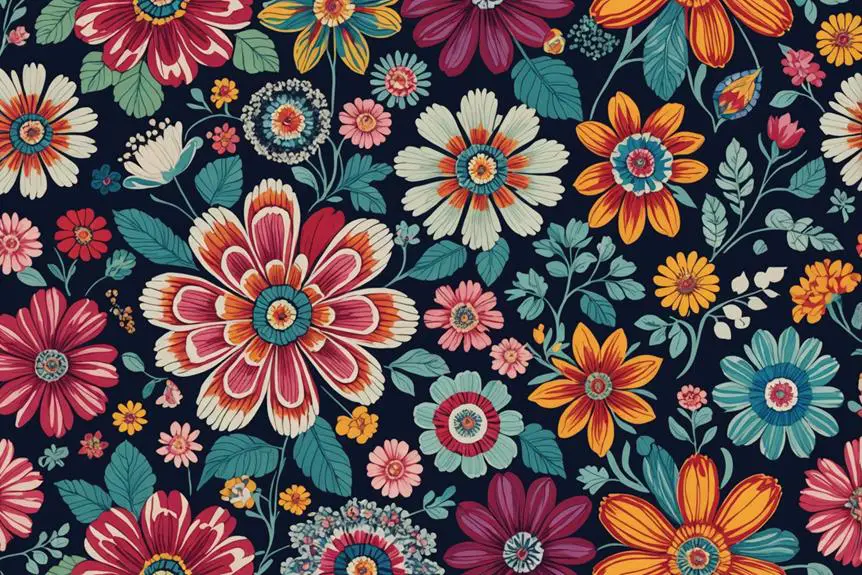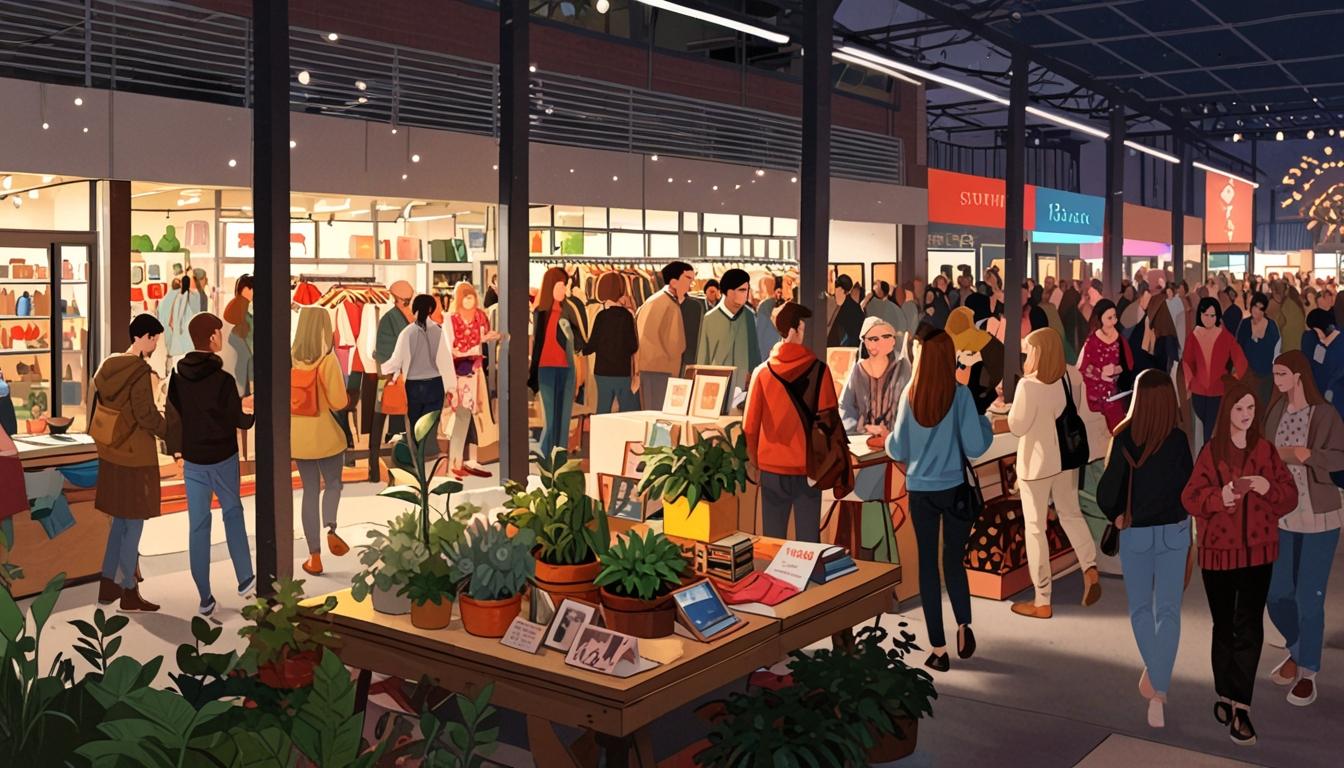When you're trying to identify Phulkari fabric, you'll want to pay attention to a few key features that set it apart from other textiles. Notice the hand-stitched embroidery on the coarse khaddar cotton, which often bursts with vibrant colors and intricate patterns. The two primary styles, Bagh and Chope, each offer unique designs that reflect cultural significance. However, it's not just the visual elements that matter; the texture and craftsmanship play essential roles too. Understanding these aspects can deepen your appreciation for this art form, but there's more to uncover about its rich history and modern relevance.
Understanding Phulkari Fabric
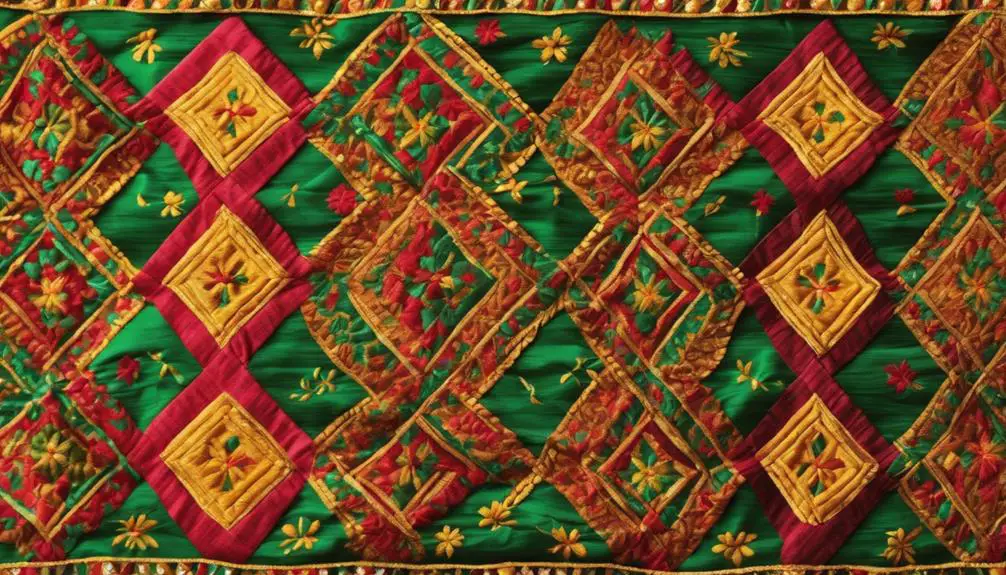
When you investigate understanding Phulkari fabric, you're exploring a vibrant tapestry of Punjabi culture. This handmade treasure, usually crafted from coarse hand-spun cotton known as khaddar, serves as a sturdy base for stunning embroidery. So, what makes Phulkari so special? It's all about the intricate designs! You'll see floral motifs and geometric patterns that burst with vibrant colors, making each piece a true work of art.
Now, let's explore the styles. You might come across "bagh," which features all-over embroidery, or "chope," where the embroidery is focused on the borders. Each style tells a story, showcasing the rich heritage of Punjab. Some designs even depict village life or feature central motifs, adding layers of meaning to the fabric.
But here's the catch: authentic Phulkari pieces aren't just your average fabric. They're often passed down through generations, becoming cherished heirlooms. Imagine wearing a piece of history that connects you to your family's past! Isn't that cool?
Key Characteristics of Phulkari
Phulkari fabric captivates with its unique characteristics that set it apart from other textiles. If you're diving into the world of Phulkari, you'll quickly discover why it's such a beloved art form in Punjabi culture. Here are some key traits that'll help you identify this stunning fabric:
- Material Matters: Phulkari is usually crafted from coarse khaddar cotton. This hand-spun fabric provides a textured base that feels rich and authentic.
- Vibrant Embroidery: Look for bright, unplied silk threads, also called pat. The intricate embroidery often showcases delicate floral and geometric patterns, created using the darning stitch technique.
- Types to Know: You'll find distinctive styles like Bagh, which features all-over embroidery, and Chope, known for its double-sided designs. These styles often sport vibrant red and yellow hues.
- Cultural Motifs: The embroidery isn't just pretty; it's packed with meaning! You'll see motifs inspired by nature, like mustard flowers and peacocks, which hold deep cultural significance in Punjabi heritage.
Each Phulkari piece tells a story, crafted lovingly by artisans who pass down their skills through generations. So, when you wear or see Phulkari, you're not just looking at fabric; you're embracing a tradition that's full of life, color, and emotion. Isn't that amazing?
Types of Phulkari Embroidery
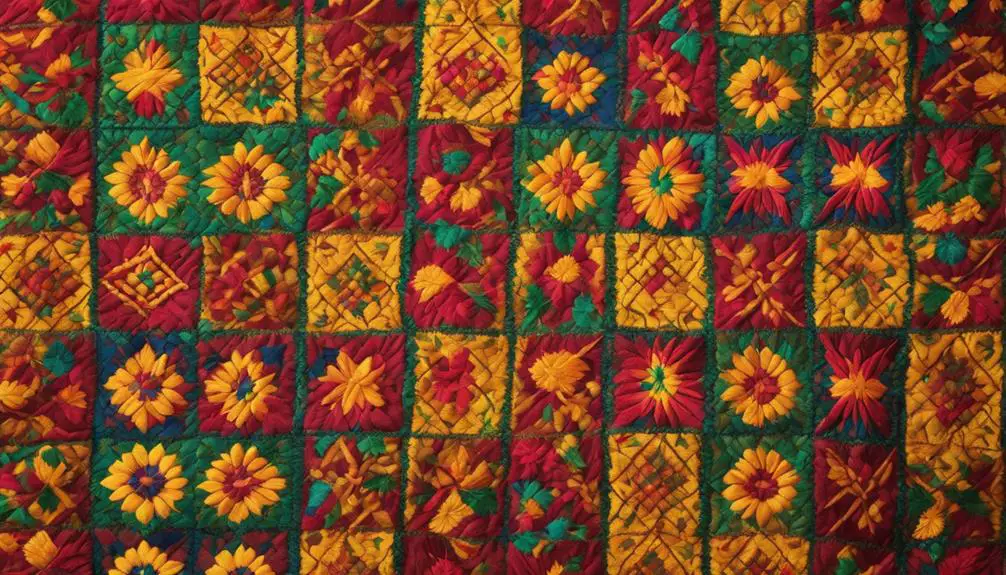
Exploring the vibrant world of Phulkari embroidery reveals a rich tapestry of styles, each with its own unique significance and aesthetic. You'll find that the different types of Phulkari are not just about colors and patterns—they tell stories!
First up is Bagh, known for its dense, all-over embroidery that completely covers the fabric. This style was often used by women of status during special occasions, showcasing intricate craftsmanship. Next, there's Chope. This one's a showstopper! It's usually two-sided and features gold hues, making it a popular choice for brides during wedding ceremonies.
Then we have Sainchi, which really takes you into the heart of Punjab. It depicts scenes of rural life, showcasing animals and daily activities. This type requires advanced embroidery skills, proving just how talented these women are!
Don't miss Thirma, made from white khaddar, symbolizing purity. Older women often wear it, as the bright colored patterns pop against the white background. Finally, there's Darshan Dwar, created as offerings for temples. It features human and animal motifs and reflects spiritual themes with its intricate designs.
Cultural Significance of Phulkari
Delving into the cultural significance of Phulkari reveals its profound connection to Punjabi heritage. This beautiful embroidery isn't just a craft; it's a vibrant part of Punjabi culture that tells stories and connects generations. When you see Phulkari, you're looking at more than just fabric—you're witnessing a tapestry of traditions, emotions, and personal history.
Here are some key emotional connections to Phulkari that you might find fascinating:
- Symbol of Prosperity: Traditionally given as part of a bride's dowry, Phulkari symbolizes wealth and fertility.
- Storytelling Medium: Each motif tells a unique story, reflecting daily life and family celebrations.
- Communal Activity: Women often gather to embroider together, singing folk songs that strengthen bonds and create cherished memories.
- Personal Heritage: Every piece carries the wearer's personal history, connecting them to their roots and family legacy.
Phulkari embroidery showcases intricate motifs that reflect the rich tapestry of Punjabi traditions. Imagine wearing something that not only looks stunning but also shares your story! With every stitch, you're participating in a centuries-old craft that celebrates life, love, and community.
Contemporary Usage and Revivals
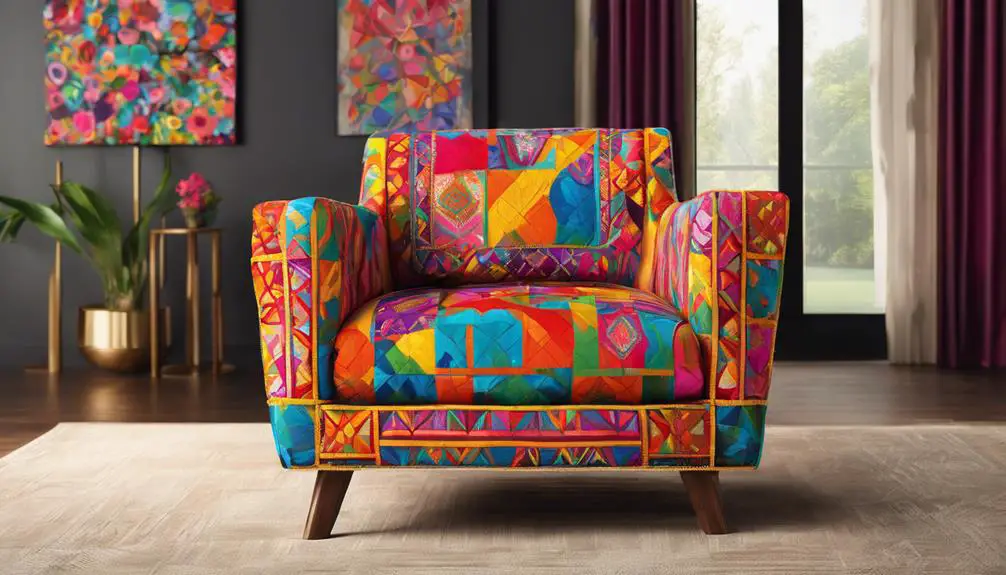
In today's fashion landscape, Phulkari embroidery is experiencing a vibrant revival, seamlessly merging traditional artistry with contemporary styles. You might've noticed it popping up in clothing by big designers like Manish Malhotra, who skillfully blends Phulkari with modern trends. This isn't just a fad; it's a celebration of traditional craftsmanship that's making its mark in global markets.
But how did we get here? Workshops, exhibitions, and NGO initiatives are stepping up, providing artisan training, especially in regions like Hazara. These efforts are essential for keeping this beautiful craft alive. Plus, government programs and the geographical indication (GI) status granted in 2011 are working hard to preserve Phulkari as an important piece of cultural heritage.
As demand grows, you'll see traditional designs adapting into contemporary apparel and accessories—think chic bags or stylish tops that still carry that rich history. And let's not forget the role of social media and e-commerce platforms! They're game changers, helping artisans showcase their gorgeous work to wider audiences. Who knew shopping could be so meaningful?
Frequently Asked Questions
What Are the Different Types of Phulkari?
Phulkari's got some awesome types! You've got Bagh, which is fully embroidered and perfect for special occasions. Then there's Chope, made for brides with stunning double-sided designs. Don't forget Thirma, symbolizing purity with bright patterns for elder women. Sainchi shows village life with cool motifs, while Darshan Dwar, crafted for religious offerings, features architectural designs. Each type has unique stitching methods and cultural symbolism, showcasing amazing craftsmanship and regional variations. Isn't that fascinating?
What Is the Fabric Used in Phulkari?
When you immerse yourself in Phulkari, you're exploring a rich textile history! The fabric's usually khaddar, a tough cotton, but you'll spot modern twists with chiffon or georgette too. These materials let those vibrant embroidery patterns really pop! The craftsmanship skills shine through in every design motif, showcasing cultural significance and regional variations. Plus, sustainable practices are becoming a trend. Isn't it cool how tradition and contemporary uses blend together?
What Color Are Phulkari Threads?
Phulkari threads burst with vibrant colors, each telling a story! You'll find shades like red, yellow, green, and blue, all tied to cultural significance. These threads, crafted using traditional techniques, create stunning patterns that reflect regional variations and artistic expressions. Designers draw inspiration from nature, like mustard flowers and peacocks, which adds layers to the textile history. Isn't it amazing how these embroidery styles connect past and present? You'll love exploring them!
What Is the Difference Between Bagh and Phulkari?
So, you're curious about the difference between Bagh and Phulkari? While both showcase amazing craftsmanship skills, Bagh features dense embroidery with intricate motifs, giving it a more prestigious vibe. Phulkari techniques, on the other hand, are sparser and more versatile. Each style tells a story of cultural symbolism and regional variations. Plus, Bagh's historical significance makes it a prized possession in weddings! Isn't it fascinating how these textiles adapt while preserving tradition?
Conclusion
So, next time you spot Phulkari fabric, you'll know what to look for! The vibrant colors, intricate designs, and that unique coarse texture are all clues to its beauty. Whether it's a Bagh or Chope style, you'll appreciate the talent behind each stitch. Isn't it amazing how a piece of fabric can tell a story? Immerse yourself in the world of Phulkari and maybe even grab a piece for yourself. Who wouldn't want a bit of art to wear?
